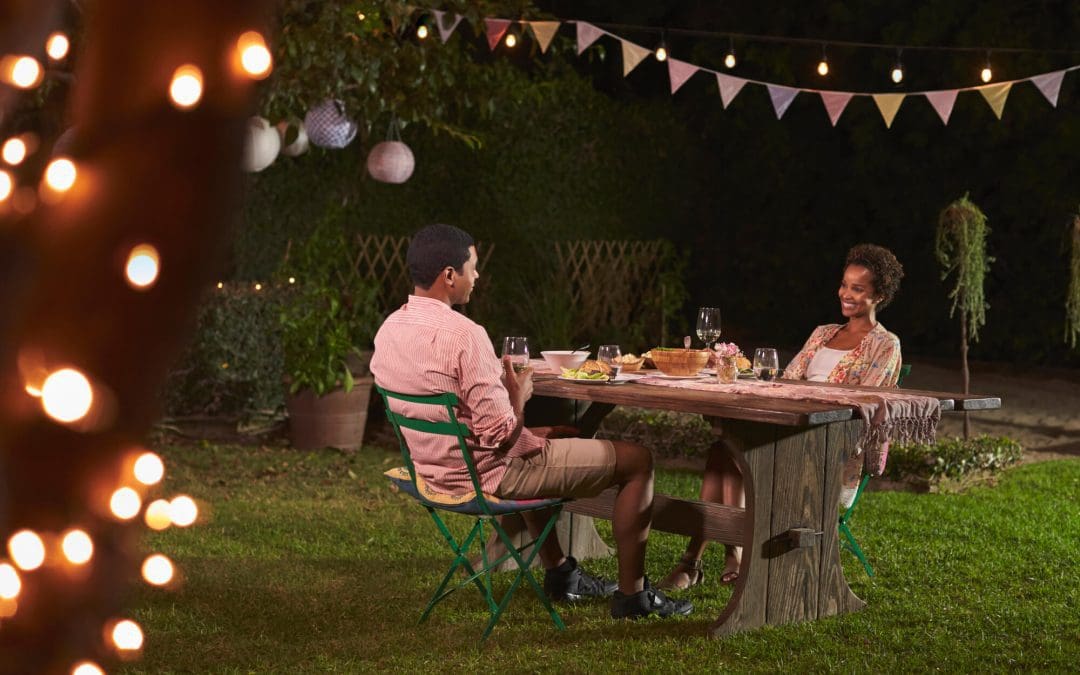Landscape lighting is a crucial element in transforming your outdoor space into a captivating and functional environment. Well-planned lighting not only enhances the aesthetic appeal of your property but also provides safety and security. Whether you have a sprawling garden, a cozy backyard, or a front yard, strategic landscape lighting can accentuate key features, create ambiance, and extend your outdoor living space into the evening hours. In this guide, we will explore the essential steps to plan for outdoor lighting so you can illuminate your outdoor space correctly the first time.
1. Define Your Objectives Before You Plan for Outdoor Lighting
Before diving into the details of your landscape lighting plan, it’s crucial to define your objectives. Consider the primary purposes of your outdoor lighting, such as highlighting architectural features, creating a pathway, enhancing security, or setting a specific mood. Clarifying your goals will guide you in making informed decisions throughout the planning process.
2. Conduct a Site Analysis
Take the time to thoroughly assess your outdoor space during the day and night. Identify key focal points, such as trees, shrubs, flower beds, architectural features, and pathways. Pay attention to areas that require additional lighting for safety and security. Understanding the natural patterns of light and shadow in your landscape will help you determine where to place fixtures for optimal effect.
3. Choose the Right Lighting Fixtures When You Plan for Outdoor Lighting
Selecting the appropriate lighting fixtures is crucial to achieving your desired aesthetic and functional goals. Consider fixtures that complement the style of your home and outdoor space. Popular options include path lights, spotlights, well lights, and accent lights. Additionally, choose fixtures that are durable and weather-resistant to withstand outdoor conditions.
4. Plan for Layers of Light
Just like indoor lighting, outdoor lighting benefits from a layered approach. Incorporate three primary layers – ambient, task, and accent lighting – to create depth and visual interest. Ambient lighting provides overall illumination, task lighting serves specific functional purposes (e.g., reading or cooking), and accent lighting highlights architectural or natural features.
5. Focus on Key Features
Identify the key features in your landscape that you want to highlight. This may include trees, sculptures, water features, or architectural elements. Use a combination of uplighting, downlighting, and cross-lighting techniques to showcase these features effectively.
6. Consider Energy Efficiency When You Plan for Outdoor Lighting
Opt for energy-efficient lighting solutions to minimize environmental impact and reduce long-term operational costs. LED lights are a popular choice for landscape lighting due to their longevity, low energy consumption, and versatility. Additionally, solar-powered fixtures offer an eco-friendly alternative for certain applications.
7. Create a Lighting Plan
Once you have a clear understanding of your objectives, site analysis, chosen fixtures, and layers of light, it’s time to create a detailed lighting plan. Sketch a layout of your outdoor space, indicating the placement of fixtures, wiring, and power sources. This plan will serve as a roadmap during the installation process.
8. Test and Adjust
Before finalizing your landscape lighting installation, conduct a test run to ensure that the fixtures are placed correctly and produce the desired effects. Adjust the positioning, angles, and intensity of the lights as needed to achieve the perfect balance between illumination and shadows.
Planning for landscape lighting is a creative and practical endeavor that can significantly enhance the beauty and functionality of your outdoor space. By defining your objectives, conducting a thorough site analysis, choosing the right fixtures, incorporating layers of light, focusing on key features, considering energy efficiency, creating a lighting plan, and testing and adjusting as necessary, you can create an inviting and visually stunning landscape that can be enjoyed day and night. Illuminate your outdoor haven and make it a place where beauty meets functionality with a well-thought-out landscape lighting plan.
FAQs
How can I integrate smart technology into my outdoor lighting scheme for added convenience and control?
Incorporating smart lighting solutions allows you to effortlessly control your outdoor lights remotely through smartphone apps or voice commands. This technology not only enhances convenience but also enables you to schedule and customize lighting effects to suit different occasions.
What role do color-changing LED lights play in outdoor lighting design?
Color-changing LED lights can add a dynamic element to your landscape, allowing you to alter the ambiance based on your mood or special events. Whether you want a vibrant display for a festive gathering or a calming hue for a tranquil evening, these lights provide versatility in creating unique outdoor atmospheres.
Can outdoor lighting contribute to home security beyond traditional floodlights?
Absolutely. In addition to well-placed floodlights, consider incorporating motion-activated lights along pathways and entry points. This not only enhances security by deterring potential intruders but also adds a layer of convenience by illuminating your way as you approach your home.
What are some tips for maintaining outdoor lighting fixtures for optimal performance?
Regularly clean the fixtures to remove dirt and debris, check for loose connections, and trim foliage to prevent it from obstructing light distribution. Periodic maintenance ensures that your outdoor lighting continues to function efficiently and retains its aesthetic appeal.
How can I create a cozy and inviting atmosphere in my outdoor space using lighting?
To create a warm and inviting atmosphere, consider incorporating string lights or bistro lights, which add a touch of charm to your outdoor setting. Placing these lights strategically around seating areas or hanging them above a patio creates a cozy and intimate ambiance.
St. James Home Services offers inspections to homebuyers and sellers in Durham and the surrounding areas of North Carolina. Contact us to schedule our services.

